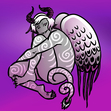Siavahda's Blog, page 99
June 13, 2020
Raise Your Flag Up High: Pride Flag Fantasy Book Recs
Shamelessly nabbing the idea from Rainbow Reads (which is a fantastic book blog for queer fiction, and if you’re not subscribed to their posts, you should be!) I’m going to rec a Fantasy book for each of the stripes of the Pride flag. Rainbow Reads used the original Gilbert Baker flag + the new brown and black stripes; I’m going to go a step further and also include the trans stripes, as on the Daniel Quasar flag below.
 So this, plus the pink and turquoise stripes from the original Baker flag.
So this, plus the pink and turquoise stripes from the original Baker flag.Baker designed the first Pride flag with each stripe representing what he saw as a core aspect of the queer experience/identity. The hot pink and turquoise stripes were eventually cut for practical reasons, but there’s no reason not to include them in this post!

So: these, plus the brown, black, and trans stripes.
Here we go!
Sexuality
Theme: a (fantasy) romance novel
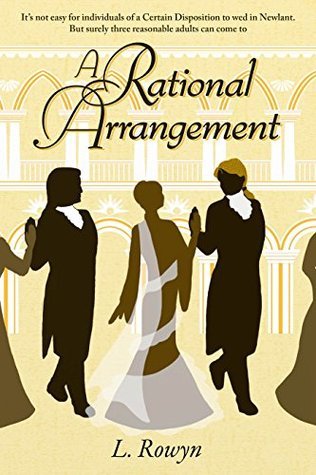
A Rational Arrangement by L. Rowyn is an m/m/f polyamorous romantic fantasy set in a regency romance-esque world – except with giant talking cats and some people having magical abilities. The worldbuilding is actually awesome, but this was also my first time seeing an autistic woman as a lead character, and the relationship that develops between her and the two wonderful men she finds makes this a really delicious comfort read.
Life
Theme: a book that celebrates LGBT lives
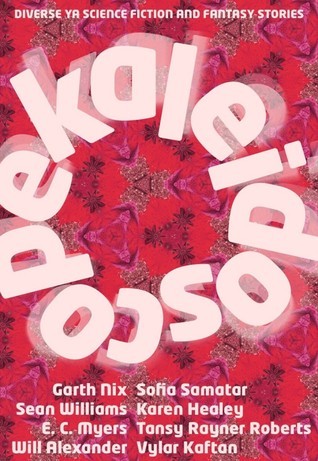
This is one of my favourite anthologies of short stories; it’s not often you find one where every story shines, but Kaleidoscope is something really special. It’s a whole bundle of stories featuring different flavours of queerness (and nuerodivergence!) in some really cool spec-fic, and I treasure it. I think this book is the reason I started trusting anthologies at all; I didn’t use to be much of a fan, but Kaleidoscope taught me it can be worth the risk. It doesn’t hurt that it features stories by some of my very favourite authors!
Healing
Theme: a book that feels like healing
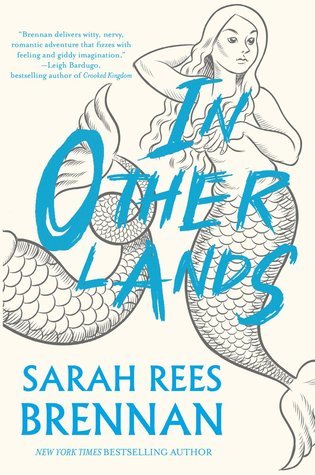
In Other Lands is what you get when you take a snarky bisexual boy to magic school…and he’s not impressed. It’s a ridiculous amount of fun, but it’s also wickedly clever and gives you a lot of food for thought, especially if you’re familiar with the classic fantasy tropes than Brennan flips upside-down and dissects here. (As she does in a lot of her work, actually.) This wasn’t my first pick for the Healing stripe, but once it occurred to me, no other book could have the spot. In Other Lands is healing in multiple ways: we get to see Elliot, the main character, slowly heal from years of emotional abuse; we see how he and his friends and allies start to bring a kind of healing to the cultures on the other side of the magical Wall; and most of all, it’s healing for the reader. In Other Lands will make you laugh, will make your heart feel so full, without pretending that bad things don’t happen and life doesn’t suck sometimes. When you’re hurting, pick up this book. I promise you you’ll feel better.
Sunlight
Theme: a book with summery sunny vibes
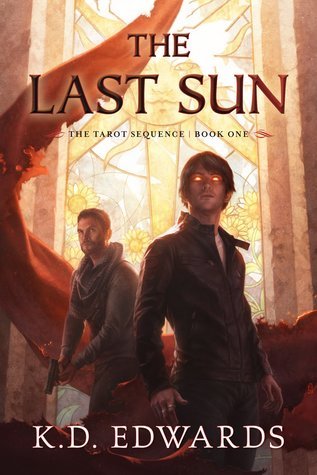
Look I’m just never gonna NOT use The Last Sun for this stripe, okay? Okay. It’s just too perfect. Sunshine…The Last Sun…look, you don’t have to be a rocket scientist to see the connection, yes?
Doesn’t hurt that it’s one of the best books I’ve ever read, either!
Nature
Theme: a book that connects to nature
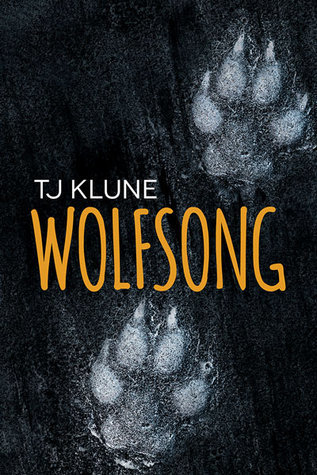
I guess it’s kind of a given that a book about werewolves is also about nature, but the Green Creek series is moreso than most, revolving as it does around the special nature (hah!) of the Green Creek territory. Green Creek is old, and powerful; a special place that belongs to very special protectors. It’s a haven and a home, a stronghold and a throne, and I know I’m not even close to the only one who wishes they could walk beneath its trees.
Magic
Theme: a fantasy novel
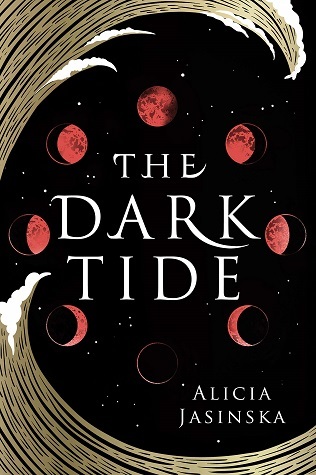
All the books on this list are fantasy books, so for this stripe I thought I’d choose a fantasy book that’s really about magic. Caldera is an island full of magic, home to the Water Palace where live witches born out of nightmares and dreams. More than that, Caldera needs magic to survive; without the yearly sacrifice to the waves, the dark tide would swallow up and destroy the island. I haven’t finished reading this one yet, but I’m head-over-heels in love with it; the nature of magic, the rules of it and the cost of it and most of all the dark wonder of it are what drives the story here. Dark Tide is one of those rare books where the magic actually feels truly magical – and that’s without even beginning to dig into the fantastic characters and the ways in which they interact.
It just came out this month in ebook-format: seriously, you need to read it.
Harmony
Theme: a book that leaves you feeling calm
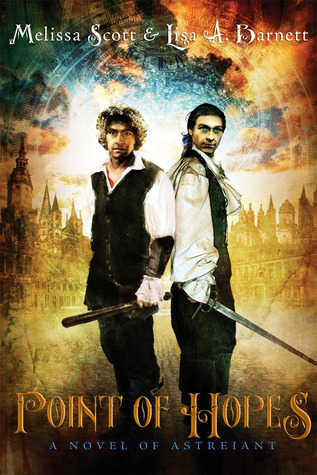
Point of Hopes by Melissa Scott and Lisa Barnett – and all the rest of the Astreiant series, for that matter – is such a soothing book. Set in a world very like our Tudor period, but where the stars you’re born under really do affect your life in every way and queerness is completely normalised, it’s a slow, descriptive book that is technically a kind of detective novel – pointsman (policeman) Rathe is on the hunt for whoever’s been taking missing children – but it’s not high-paced or frenetic. It’s just really lovely and comforting and everything always ends well; one of my favourite comfort reads.
Spirit
Theme: a book that makes you feel connected to the community
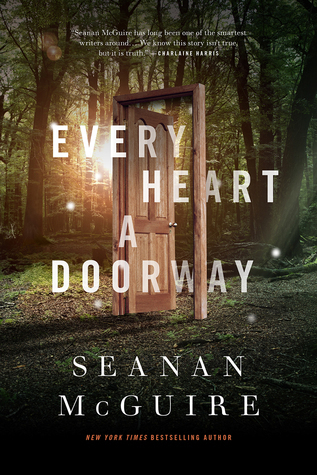
Like In Other Lands, this book, Every Heart a Doorway, qualifies for the Spirit stripe in more ways than one. Set in a boarding school for kids who went to other worlds before they were kicked back to this one, it grabbed me by the throat in showing me all these characters that felt exactly like I did – showing me a community of people who wanted nothing more than to find their Door home. It was the first time I ever saw an openly asexual character use the word asexual on-page, the first time I ever thought oh, she’s like me, there’s a place for me here after all. And watching, reading, and tracking the reactions to EHaD – which seemed to send a stir through the entire Fantasy world – made me feel connected to so many strangers who felt the same things about this book that I did; people opening up about their longing for a Door, their Door, about their refusal to give up believing in magic, about the (barely a) metaphor for being queer and needing to find the place you belong. EHaD gave me a community of characters, a community of readers, and reaffirmed that there was a place for asexual people in the queer community as a whole. It’s a very special book.
QPOC
Theme: a book by and about QPOC
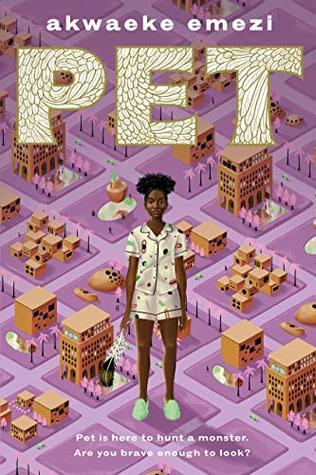
Pet is a beautiful book about a young queer Black girl who must help an angel – one more along the original Biblical descriptions than a fluffy baby with a harp – hunt through the seeming Utopia she lives in to find a hidden evil. Besides being gorgeous, original, and escapist (the world Jam lives in looks so like the one I want for our world) it also hammers home a hard truth more of us need to learn: that vigilance is required even when things look perfect. Maybe especially when things look perfect. There’ll always be monsters, but as long as we never pretend otherwise, they’ll never win.
Trans
Theme: a book by and about a trans person
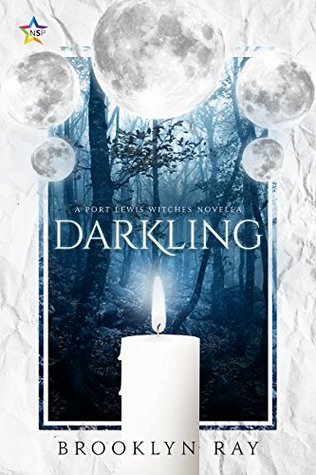
I wrote a review of Darkling way back in July of last year – you can read it here – and I love it just as much now as I did when I first read it. It’s the unashamedly sexy story of a trans witch who has to find a way to reconcile the two sides of his heritage – fire witchery and necromancy – before he ends up killing someone. The characters just sweep you off your feet, the writing is stunning, I love the entire set-up of the magic, and every instalment in the series just brings you more to love. The author, Brooklyn Ray, is also a trans witch, and a very cool person to be following on social media.
Show me your stripes in the comments!
The post Raise Your Flag Up High: Pride Flag Fantasy Book Recs appeared first on Every Book a Doorway.
June 8, 2020
Why Do I Want My Fantasy to be Queer?
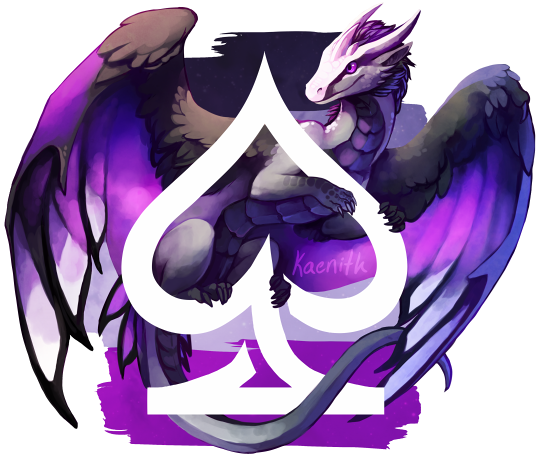 Asexual Pride dragon by Kaenith!
Asexual Pride dragon by Kaenith!If you pitch me two similar-sounding books, but one is queer? Then that’s the one I’m picking.
And I can’t figure out why.
Of course, it’s a given that representation matters in fiction – I’m not here to debate that; as far as I’m concerned, it’s a fact, not an opinion. This post isn’t about that.
But I’m an agender, asexual, polyamorous human-shaped person. Representation, for me specifically, is a non-issue – at least in the Fantasy genre, which is what I read almost exclusively, there aren’t characters like me.
Well, that’s not true: there’s one, the character Always Falling from MCA Hogarth’s Twin Kingdoms Romances series. (Which I encourage you to check out, because seriously, they’re some of my favourite books ever.)
But still.
One.
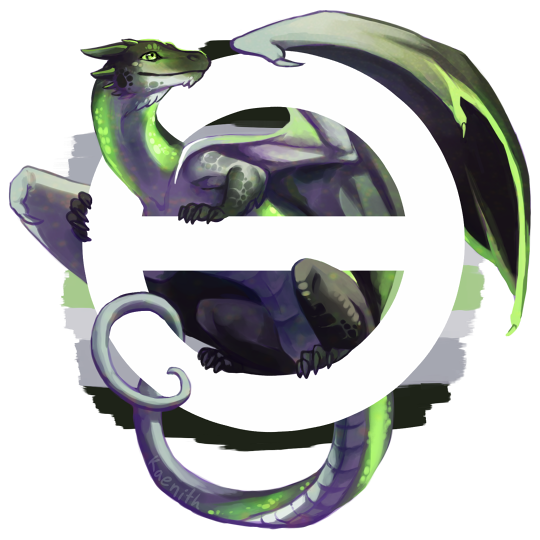 Agender Pride dragon, by Kaenith!
Agender Pride dragon, by Kaenith!And the thing is, I don’t mind! I’m not looking for fictional characters that tick all the same boxes I do, although I wouldn’t mind seeing more. But it’s rare to find characters who even tick one of those boxes – asexual characters, agender characters, poly characters; they exist (and I gather there’s more of them outside of Fantasy?) but they’re an awful lot rarer than diamonds. And while I’ll happily give a book that features one of those labels a try, I’m equally happy to read about other flavours of queerness, ones that don’t reflect me at all.
My point is, for me, the preference and desire for queer fic isn’t tied to representation, because people like me are almost never represented.
So…why the preference?
Because I don’t read ‘queer stories’. I specifically want stories that happen to be about queer people having adventures, where their being queer is incidental to the story itself. I don’t think it’s a fetishisation thing, because I’m disinterested in romantic subplots and skip over sex scenes. I don’t think it’s about the ‘queer experience’, because I prefer secondary-world fantasy to stories set in our world – where, if the author has done their worldbuilding properly, the ‘queer experience’ should be fairly different to our own.
So if I want queerness that is incidental to the plot itself, why does it matter so much? If what I’m looking for is good worldbuilding and a good story – and a writing style that works for me – shouldn’t I be just as excited about an upcoming non-queer book as I am a queer one?
But I’m not. In fact, I’ll even pick up books whose premises sound like they won’t appeal to me, if I’m promised queer content.
And that doesn’t seem like rational behaviour.
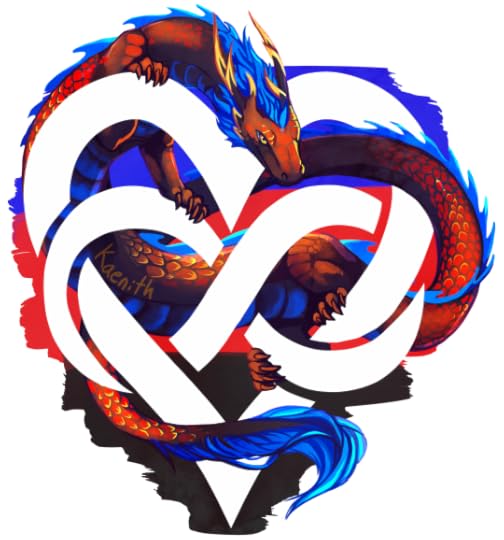 Polyamory Pride dragon by Kaenith!
Polyamory Pride dragon by Kaenith!I’ve wracked my brains about this for months – I wrote the first draft of this post last year – and the only thing I can come up with is this: if a writer is willing to buck tradition by writing queer characters, then it follows that they might be more likely to go beyond the norms in other aspects of their book as well. And I like my Fantasy inventive, unique and weird. So it makes sense to seek out writers/stories that are maybe more likely to push boundaries in their storytelling.
Of course, this isn’t anything like a sure thing, especially in certain sub-genres (paranormal romance jumps out at me as one where this ‘rule’ definitely fails more often than not). But, looking at my bookshelf, it does tentatively seem like there might be something to it.
I once read a theory that trans people (and, I think, all non-binary folx) provide an evolutionary benefit by being more inclined to thinking outside the box – a vital quality if your tribe is facing some kind of problem tradition can’t handle. Now, I haven’t seen science or studies to back any of that up, but even if we extend this to include all/most queer peeps…to me that would mean that it’s queer authors who are more likely to tell new kinds of stories. The sexualities of their characters would be irrelevant.
It’s true that different countries/cultures have very distinct literary traditions, and it’s not that hard to figure out why. But can we really say that applies to the queer community? It’s not like we’re one cohesive group – far from it! I’m not sure we can really say there’s a queer style/tradition of writing/storytelling – not in the way that there’s a distinct difference between American-written fantasy and Australian-written fantasy. (And if you don’t believe me, pick up a few Australian authors, because wow. When you’re used to American-and-British fantasy, the Australian stuff is mindblowingly cool.)
I feel far more confident saying that authors of colour write different stories from white authors, or write the same stories very differently. But maybe Black authors, for example, have a lot more shared experiences in common than queer people across the spectrum do with each other. How much do a white, cis gay Republican and a trans woman of colour really have in common? Would the stories they choose to tell have any similarities at all?
Do queer writers – as a whole – really write distinctly different stories from heteronormative authors? I have no idea – and I have no idea how you’d even begin to go about trying to figure that out. (For one thing, how do you define ‘different’?) I know a lot of my favourite authors are some flavour of queer. Given how picky I am in my reading tastes, that does seem like a big coincidence.
But maybe it is just coincidence. It’s not as though the books in question have a whole lot in common, apart from being fantasy. They don’t all use the same tropes, or have similar characters, or even fit into the same sub-genres.
And anyway, there being queer characters in a book doesn’t mean the author is queer – even if we did agree that queer writers are more likely to write non-traditional, boundary-pushing fantasy. Which we can’t say is true, at all. But even if it was true…it still doesn’t explain why I reach for books with queer content. If it was true, it would make more sense for me to go looking for queer writers.
And I don’t. Just like I don’t deliberately seek out women writers. And yet…I seem to end up reading queer and female writers almost exclusively. Despite not going looking for them.
But to circle back to my premise – queer characters raise the chances of the author writing a more original story – well, honestly, I can’t figure out any other reason why I’d choose the queer story over the heteronormative one even when the premises are identical. Because I do do that, over and over again.
What about you? Why do you want to see queer rep in the books you read? Why does it matter to you? (And how much does it matter?)
The post Why Do I Want My Fantasy to be Queer? appeared first on Every Book a Doorway.
June 1, 2020
Queer Fantasy Rec List: Resistance & Rebellion
As I explained in my last post, I decided my first rec list this Pride would revolve around the theme of Resistance & Rebellion, in response to the events going on in the USA and Hong Kong right now.
I wish I could have listed more books written or featuring PoC, but I don’t know of more than these. If anyone knows of more racially diverse lists – or queer fantasy/sci-fi books with the same themes of resistance and rebellion – please leave me a link in the comments!
Rec lists can’t do much, but I truly believe that stories can, and I hope that at least some of these books bring inspiration and strength to the people who need them.
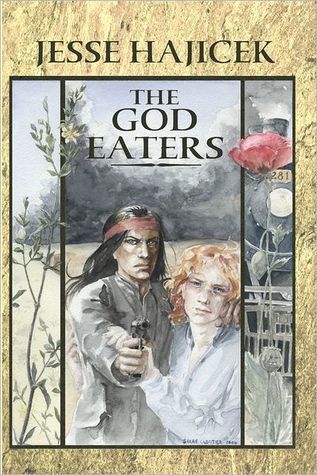
The God Eaters follows low-tier anarchist Ashleigh and death-witch Kieran as they meet in a prison for magicals. When they set out to escape, and then tear down, the totalitarian establishment that threw them both in prison (and has oppressed and nearly wiped out the tribes of Kieran’s people), it’ll lead them into the depths of myth and into a warzone between gods.
I’m not going to lie, it’s a little hard to get a hold of this one, since Hajicek self-published it, but it’s for sale in e-format over on Lulu.com.
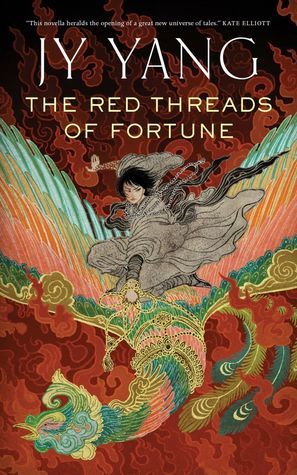
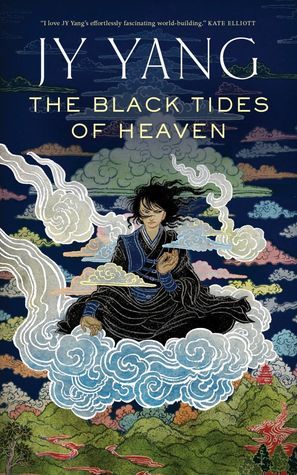
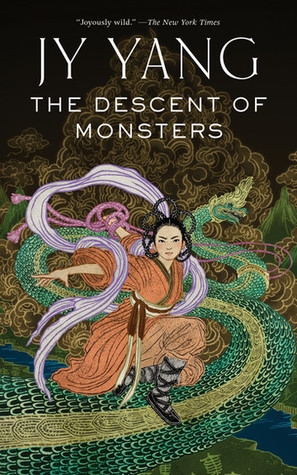
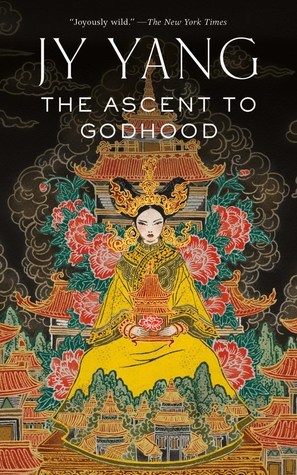
The Tensorate series follows the twin children of a tyrant as they both take their own paths in an effort to take down their mother. Unique magic faces off against industrialisation, and a world where everyone chooses their gender and dragons twist through low-gravity skies…it’s a series you shouldn’t miss even if you’re not feeling like a little rebellion.
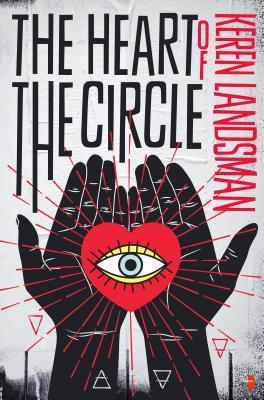
I reviewed Heart of the Circle last year – you can read my review here – but this is very much a book about demonstrations and protests and riots, and protesters having to protect themselves from people who don’t approve. Here, the people fighting for their rights are sorcerers – empaths, seers, others with other magical abilities – but their struggle doesn’t require any magic to understand and empathise with. It’s a fierce book with a brilliant magic system and a cast that’ll steal your heart.
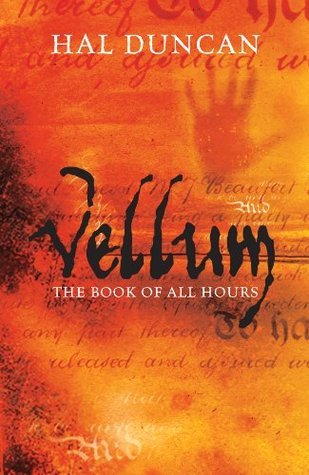
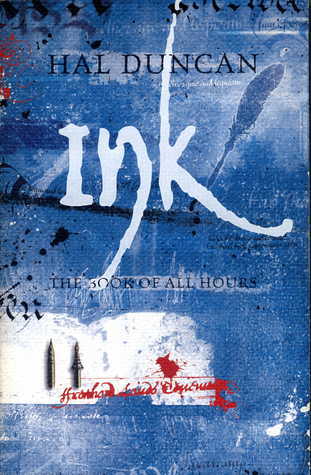
The Book of All Hours duet starts with a map on fire, cinematic and grabbing. Both books are like that, from the first page to the last, as a cast of characters jump back and forth between realities and timelines, draft-dodgers from the war between angels and demons – neither of which are what you’d think. Mixing magic and sci-fi and myth, this is about a team of extraordinary people who are going to burn reality down, if that’s what it takes to break a broken system.
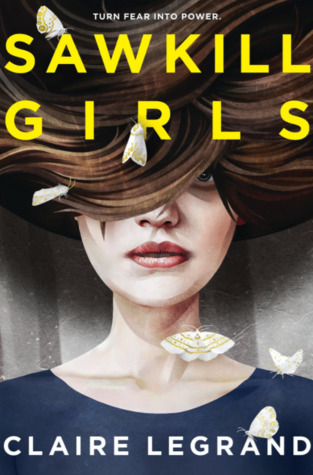
In Sawkill Girls, three girls – two attracted to other girls, and one asexual – are drawn together by the kind-of-consciousness of the very island they live on. Dreams and strangeness, demons and beautiful horses and age-old mysteries; girls have been dying, not just on the island, but all over the world. If these three want to stop it all, they’ll have to band together to tear down the patriarchy that’s happy to keep sacrificing them.
There’ll be more rec lists this month, with different themes. Feel free to leave your queer fantasy recs in the comments; I’d love to add them to my tbr!
The post Queer Fantasy Rec List: Resistance & Rebellion appeared first on Every Book a Doorway.
It’s My Blog Birthday – Let’s Have Some Pride!
Today my blog is ONE WHOLE YEAR OLD!
 Woo!
Woo!It’s also the first day of Pride Month!
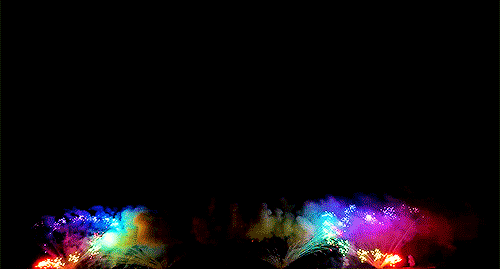 Rainbow woo!
Rainbow woo!It’s no coincidence that those two dates are the same – I started Every Book a Doorway so I’d have a place to talk about queer fantasy, and although health problems meant I wasn’t as active for my first year as I wanted, I’m still really proud of how far I’ve come and what EBaD is shaping up to be.
It’s difficult to feel really celebratory, though, with the state of the world right now. Black Lives Matter should not be a controversial statement, and white people shouldn’t pass judgement on how oppressed minorities express their (completely justified) helplessness and rage. We in the queer community should understand this more than anyone – Stonewall was a riot, people. More, it was a riot started by Black and brown trans women. Whatever flavour of queer you are, you need to know and respect that part of our heritage – and understand and support other groups fighting for their rights.
So I decided that this year, my first Pride recommendations list is going to be themed: Resistance & Rebellion. You can find last year’s (non-themed) list here, and today’s list in my next post here.
I’ve also decided to set myself a reading challenge. Rainbow Readathon on Twitter are running a really cool readathon inspired by the meanings behind each stripe of the original Pride flag by Gilbert Baker;
[image error]The pink and turquoise stripes were dropped for practical reasons a little after the flag’s creation in 1978.
Rainbow Readathon participants are supposed to choose books inspired by each of the original stripes. And when I heard about this, I was so excited to take part! But now, I’ve decided I want to draw my inspiration from a different flag.
 The Daniel Qasar flag.
The Daniel Qasar flag.This flag was created by Daniel Qasar, to include/honour queer people of colour and especially/specifically trans people. This is the flag I’m going to use to inspire my personal reading challenge.
And here’s my TBR!
Red – Life
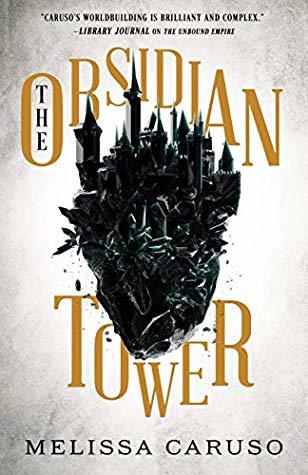
With a bi main character, Carusio’s debut releases tomorrow, and features a magic system drawn from the life within a mage’s claimed territory.
Orange – Healing
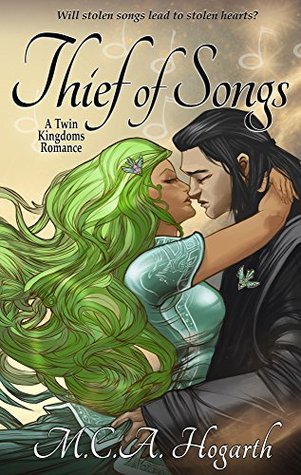
Despite being under the rule of the same Emperor, the Twin Kingdoms are very much at odds – but a relationship between a highlands writer of music and the royal composer will bring healing and magic to both.
Yellow – Sunlight
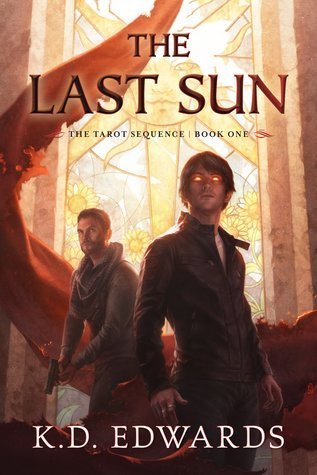
Yes, I’ve read this before – your point??? This is the perfect time to reread the series, since KD Edwards just released his novella Sunken Mall, which is set between The Last Sun and The Hanged Man, books one and two.
I love this book, and I want something I love right now as a kind of comfort-read. And you can’t say it doesn’t satisfy the requirements for the sun stripe!
Green – Nature
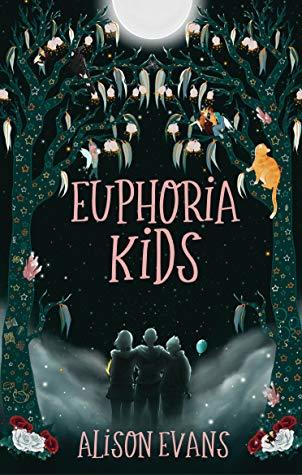
One of the main characters of Euphoria Kids is a non-binary sweetheart who grew from a seed, and even their friends – a trans girl made of fire and a boy without a name – are pulled towards nature as fairies, dryads, and witches gather around them in this soft and beautiful fantasy.
Blue – Harmony
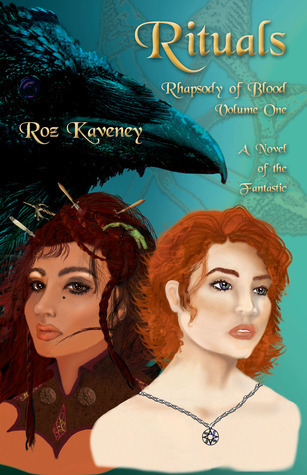
The Rhapsody of Blood series is, at its heart, about keeping the magical and not-magical worlds in harmony. Mara, an immortal born before any myth or legend you’ve ever heard of, stalks the world to prevent people from performing the ritual that can turn mortals into gods – if they’re willing to spend oceans of blood, that is. Her story runs alongside Emma’s, who becomes a kind of problem-solver and mediator for the supernatural community. When their paths intersect, well…
Purple – Spirit
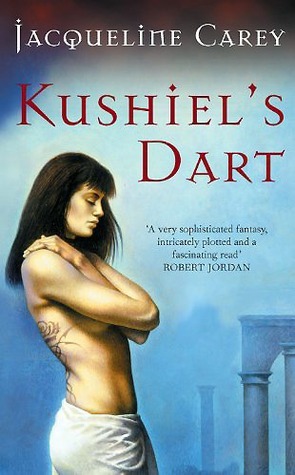
In Kushiel’s Dart, sex is a spiritual act – a form of worship of the angel Namaah, one of the founders of the land Terre d’Ange. Phedre, the bisexual narrator of Kushiel’s Dart, is a courtesan belonging both to Namaah and Kushiel – another of Terre d’Ange’s founders, and one with a very unique destiny to offer Phedre.
Trans – a Book With a Trans Lead
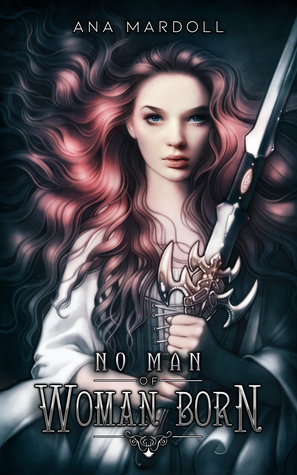
No Man of Women Born is an anthology of stories in which the ‘no man of woman born’ line of prophecy refers to trans heroes and heroines.
PoC – a Book With an Author and/or MC of Colour
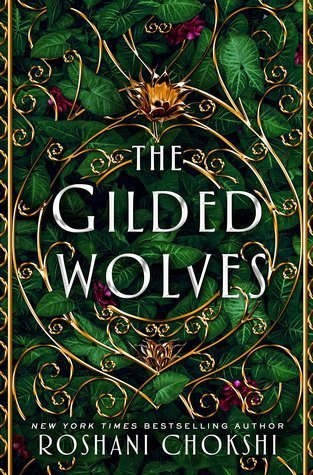
The Gilded Wolves is a fantasy-heist book, written by the inestimable Choksi and featuring a racially and sexually diverse cast working together to overturn the establishment.
What are you going to be reading this month?
The post It’s My Blog Birthday – Let’s Have Some Pride! appeared first on Every Book a Doorway.
May 31, 2020
Books I’m Dying to Get My Hands On: June-December

As Wyrd and Wonder wraps up for the year, instead of feeling sad about it, I’d rather look forward. There are so many amazing books coming out in the next six months! My tbr is unending, but all of these are books that will be jumping to the top once I get them in my hands!
(I decided not to include books whose covers haven’t been revealed yet, despite the fact that a few of them are ones I’m especially looking forward to. It just makes the lists prettier when you’ve got covers to feature.)

Representation: Queer MCs
Genres: Fantasy
The Wicked Deep meets A Curse So Dark and Lonely in this gripping, dark fairy-tale fantasy about two girls who must choose between saving themselves, each other, or their sinking island city.
Every year on St. Walpurga's Eve, Caldella's Witch Queen lures a boy back to her palace. An innocent life to be sacrificed on the full moon to keep the island city from sinking.
Lina Kirk is convinced her brother is going to be taken this year. To save him, she enlists the help of Thomas Lin, the boy she secretly loves, and the only person to ever escape from the palace. But they draw the queen's attention, and Thomas is chosen as the sacrifice.
Queen Eva watched her sister die to save the boy she loved. Now as queen, she won't make the same mistake. She's willing to sacrifice anyone if it means saving herself and her city.
When Lina offers herself to the queen in exchange for Thomas's freedom, the two girls await the full moon together. But Lina is not at all what Eva expected, and the queen is nothing like Lina envisioned. Against their will, they find themselves falling for each other. As water floods Caldella's streets and the dark tide demands its sacrifice, they must choose who to save: themselves, each other, or the island city relying on them both.
I am so so SO excited for this one!!! I’ve been anticipating Dark Tide since before it had a title, and I was heartbroken when the release date was pushed back (for understandable Corona-related reasons). But the ebook edition is still coming out this Tuesday, which works for me since I can only read ebooks. (I have fibromyalgia, and can’t hold onto or bear up the weight of paper books anymore). I just can’t believe the wait is almost over!

Representation: Characters of Colour, Bi MC, enby love interest
The final volume in K. A. Doore's critically-acclaimed assassin fantasy series
Seven years have passed since the Siege — a time when the hungry dead had risen — but the memories still haunt Illi Basbowen. Though she was trained to be an elite assassin, now the Basbowen clan act as Ghadid's militia force protecting the resurrected city against a growing tide of monstrous guul that travel across the dunes.
Illi's worst fears are confirmed when General Barca arrives, bearing news that her fledgling nation, Harthage, also faces this mounting danger. In her search for the source of the guul, the general exposes a catastophic secret hidden on the outskirts of Ghadid.
To protect her city and the realm, Illi must travel to Harthage and confront her inner demons in order to defeat a greater one — but how much can she sacrifice to protect everything she knows from devastation?
I’ve loved this trilogy since book one, and I’m sad it’s nearly over – but I’m so excited to read the finale! Doore has consistently written amazing queer characters, having intricate adventures in a unique (and really cool!) setting, so I know this is going to be brilliant!

Representation: Queer MCs
Genres: Urban Fantasy
Sawkill Girls meets Beautiful Creatures in this lush and eerie debut, where the boundary between reality and nightmares is as thin as the veil between the living and the dead.
If I could have a fiddle made of Daddy’s bones, I’d play it. I’d learn all the secrets he kept.
Shady Grove inherited her father’s ability to call ghosts from the grave with his fiddle, but she also knows the fiddle’s tunes bring nothing but trouble and darkness.
But when her brother is accused of murder, she can’t let the dead keep their secrets.
In order to clear his name, she’s going to have to make those ghosts sing.
Family secrets, a gorgeously resonant LGBTQ love triangle, and just the right amount of creepiness make this young adult debut a haunting and hopeful story about facing everything that haunts us in the dark.
Ghost Wood Song was only on my to-read-maybe list until I learned it featured a bisexual love triangle. That’s not something I’ve seen before (I think it’s a bit more common these days in Contemporary YA, but not so much in Fantasy – at least not the fantasy books I’ve been reading), and it made me curious. Then I saw it compared to Sawkill Girls, which is only one of my favourite books of all time! Now I’m really eager to see what it does with the deal-at-the-crossroads myth and the queer rep.
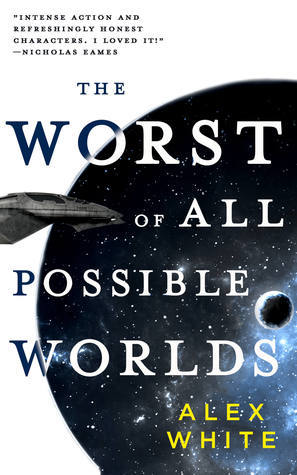
Representation: F/F, Characters of Colour
Genres: Science Fantasy
The greatest dangers hide the brightest treasures in this bold, planet-hopping science fiction adventure series.
The crew of the legendary Capricious may have gone legitimate, but they're still on the run.
With devastatingly powerful enemies in pursuit and family and friends under attack planetside, Nilah and Boots struggle to piece together rumors of an ancient technology that could lead to victory.
Ensnared by the legend of Origin, humanity's birthplace, and a long-dead form of magic, the Capricious takes off on a journey to find the first colony ship...and magic that could bring down gods.
I love, love, love the Salvagers trilogy, with its totally unique blend of science fiction and magic, and I’ve been dying to find out how the adventure ends for ages. The Worst of All Possible Worlds kept getting pushed back, but fingers crossed we’ll be getting it this July!
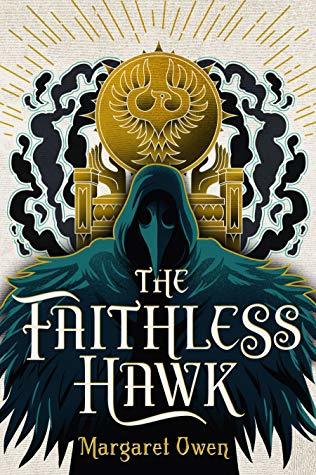
Representation: Oppressed peoples, Bi love interest
Genres: Fantasy
Kings become outcasts and lovers become foes in the thrilling sequel to Margaret Owen's The Merciful Crow.
As the new chieftain of the Crows, Fie knows better than to expect a royal to keep his word. Still she’s hopeful that Prince Jasimir will fulfill his oath to protect her fellow Crows. But then black smoke fills the sky, signaling the death of King Surimir and the beginning of Queen Rhusana's merciless bid for the throne.
With the witch queen using the deadly plague to unite the nation of Sabor against Crows—and add numbers to her monstrous army—Fie and her band are forced to go into hiding, leaving the country to be ravaged by the plague. However, they’re all running out of time before the Crows starve in exile and Sabor is lost forever.
A desperate Fie calls on old allies to help take Rhusana down from within her own walls. But inside the royal palace, the only difference between a conqueror and a thief is an army. To survive, Fie must unravel not only Rhusana’s plot, but ancient secrets of the Crows—secrets that could save her people, or set the world ablaze.
I still haven’t been able to write a worthy review for the first book of this duet, The Merciless Crow – so you can imagine how excited I am for the sequel!
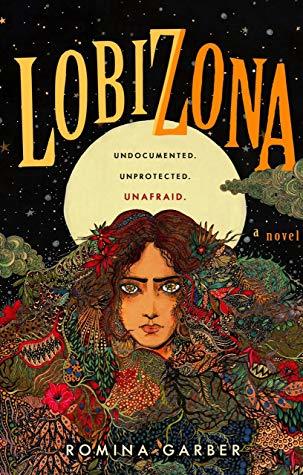
Representation: Latino MC
Genres: Urban Fantasy
Some people ARE illegal.
Lobizonas do NOT exist.
Both of these statements are false.
Manuela Azul has been crammed into an existence that feels too small for her. As an undocumented immigrant who's on the run from her father's Argentine crime-family, Manu is confined to a small apartment and a small life in Miami, Florida.
Until Manu's protective bubble is shattered.
Her surrogate grandmother is attacked, lifelong lies are exposed, and her mother is arrested by ICE. Without a home, without answers, and finally without shackles, Manu investigates the only clue she has about her past—a mysterious "Z" emblem—which leads her to a secret world buried within our own. A world connected to her dead father and his criminal past. A world straight out of Argentine folklore, where the seventh consecutive daughter is born a bruja and the seventh consecutive son is a lobizón, a werewolf. A world where her unusual eyes allow her to belong.
As Manu uncovers her own story and traces her real heritage all the way back to a cursed city in Argentina, she learns it's not just her U.S. residency that's illegal. . . .it’s her entire existence.
The only way you can be not excited for Lobizona is if you haven’t heard of it yet. Immigration, Latin American mythology, werewolves and brujas? Sign me the hell up!
[image error]
Representation: Characters of Colour
Genres: Fantasy
This gorgeously imagined YA debut blends shades of Neil Gaiman's Stardust and a breathtaking landscape of Hindu mythology into a radiant contemporary fantasy.
The daughter of a star and a mortal, Sheetal is used to keeping secrets. Pretending to be "normal." But when an accidental flare of her starfire puts her human father in the hospital, Sheetal needs a full star's help to heal him. A star like her mother, who returned to the sky long ago.
Sheetal's quest to save her father will take her to a celestial court of shining wonders and dark shadows, where she must take the stage as her family's champion in a competition to decide the next ruling house of the heavens--and win, or risk never returning to Earth at all.
Brimming with celestial intrigue, this sparkling YA debut is perfect for fans of Roshani Chokshi and Laini Taylor.
I was in love with the sound of this story even before they revealed that jaw-dropping cover…but let’s be real, the cover helps! I love all things astral and I can’t wait to see star magic mixed up with Hindu mythology.
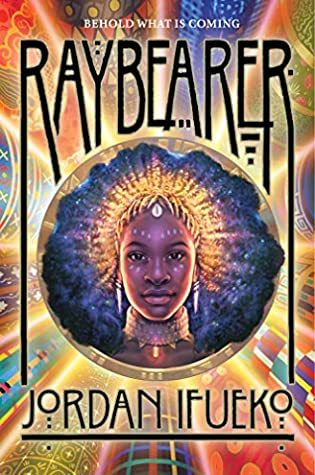
Representation: Characters of Colour, Major Asexual Character, minor gay and lesbian characters
Genres: Fantasy
The epic debut YA fantasy from an incredible new talent—perfect for fans of Tomi Adeyemi and Sabaa Tahir
Nothing is more important than loyalty.
But what if you’ve sworn to protect the one you were born to destroy?
Tarisai has always longed for the warmth of a family. She was raised in isolation by a mysterious, often absent mother known only as The Lady. The Lady sends her to the capital of the global empire of Aritsar to compete with other children to be chosen as one of the Crown Prince’s Council of 11. If she’s picked, she’ll be joined with the other Council members through the Ray, a bond deeper than blood. That closeness is irresistible to Tarisai, who has always wanted to belong somewhere. But The Lady has other ideas, including a magical wish that Tarisai is compelled to obey: Kill the Crown Prince once she gains his trust. Tarisai won’t stand by and become someone’s pawn—but is she strong enough to choose a different path for herself? With extraordinary world-building and breathtaking prose, Raybearer is the story of loyalty, fate, and the lengths we’re willing to go for the ones we love.
I’m cheating, because I’ve read this one already, but like I said, I can’t wait for its release so that I can talk about it with more people! And this is another book with a stunning cover – I would love to have a print of it on my wall, and once you’ve read the book, there’s so many details in that cover that are related to the story. But if you want to know what they are…well, you’ll have to read it for yourself 
May 30, 2020
My Favourite Reads of 2020 (So Far!)

As Wyrd & Wonder comes to a close, it feels like a good time to gather together some of my favourite reads from the first half of the year. Not all of these were 2020 releases, though; plenty were amazing books I didn’t get to the year they came out. I’ve categorised them accordingly!
2020 Releases
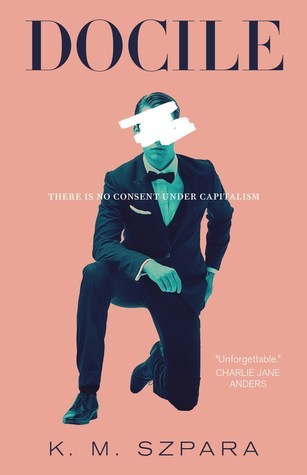
There was a lot of (incredibly justified, as it turned out) hype for Docile before release, and there’s been a lot of conversation about it since – as a queer futuristic dystopia with legalised slavery, how could there not have been? To be honest, I don’t really think I’ve got anything smart to add to the discussion. Docile is wonderfully written, reading like the best kind of fanfic (and that’s meant as an enormous compliment), uncomfortable and difficult and not flinching away from the subject matter or its implications. It managed to make me ship the main couple, without romanticising or ignoring the brutal, messed-up realities of that relationship – and then dealt with that reality, with the fall-out. I loved it. Szpara is an incredible writer – although I already knew that from his short stories – and I can’t wait to read his future works. I’ve already pre-ordered his next book!
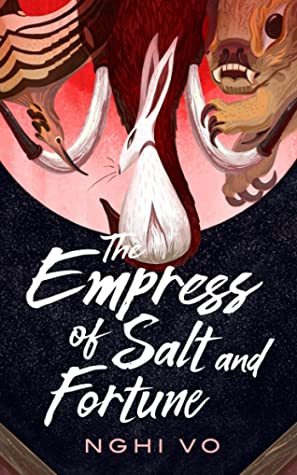
Empress of Salt and Fortune is an Asian-inspired fantasy novella, featuring a genderless monk and their magical bird companion. The priesthood they belong to records – well, everything, all kinds of story and history – and the book is about the aforementioned monk and bird listening to and recording the story of the foreign-born empress, who was sent into exile after the emperor was done with her. It’s a beautiful little book about feminine strength and friendship, fierceness and loyalty, tracing the quiet beginnings of rebellion as they fanned into open war. It’s told via the stories of precious objects, the things left behind, and it’s a clever way of framing the tale. I don’t feel like I’m doing it any kind of justice, but I’m incredibly excited for the sequel!
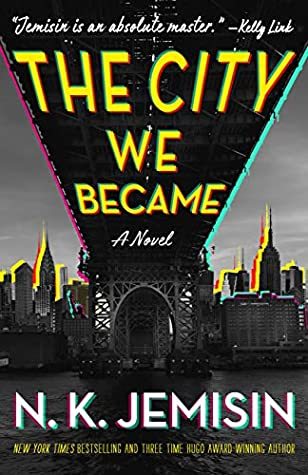
I mean…it’s NK Jemisin. Does any book need more of an introduction than that? If it’s Jemisin’s work, it’s going to be jaw-droppingly good. And The City We Became is freaking fantastic; Jemisin’s first urban fantasy novel, it’s about the people who become embodiments/avatars of New York’s boroughs when New York is ‘born’ – passing some metaphysical tipping point into becoming a living being in its own right. The problem is, there’s alien creatures from other dimensions out to kill cities like this as they’re born – and though New York’s central avatar fought off that first attack, he’s now MIA, and the monsters have broken protocol to keep attacking the city even now that it’s alive. It’s a brilliant, fierce magical adventure story, intimately tied to the very nature of New York – I was unsurprised but relieved that the city’s avatars are incredibly diverse, both in terms of race and sexuality. I’m not a New Yorker – I’m not even American – but damn, this book is enough to make me love that city. The City We Became is heartpounding, clever, and (as with all Jemisin’s stuff) incredibly original. If you haven’t read it yet, you definitely need to.

Cate Glass is the pen-name of Carol Berg, who’s written some of my favourite unique and elegant fantasies. Conjuring of Assassins is the sequel to An Illusion of Thieves, set in a Renaissance-esque world where those with magical abilities are put to death, as doorways through which the end of the world could come. In Illusion, the main character, whose magical power allows her to don impenetrable disguises, joined forces with other mages to form a team capable and willing of taking on impossibly delicate tasks – in heist-form. Conjuring is another heist-story, and the writing is so rich, the worldbuilding so perfect, that it’s an absolute joy to read. Conjuring also builds on tiny hints left in Illusion, beginning to suggest that there’s a lot more to this world’s mythology – and the hatred towards and purpose of magic-users – than people know. So far there’s more questions than answers, but I can’t wait to learn more in future books!

This one’s kind of cheating, because I’ve already read it – but I can’t wait for it to be released so everyone else can read it too! It’s an incredibly intricate, beautiful, powerful novel (I can’t believe it’s Ifueko’s debut?!) that I already know is going to be one of the best books of the decade.
Pre-2020 Releases
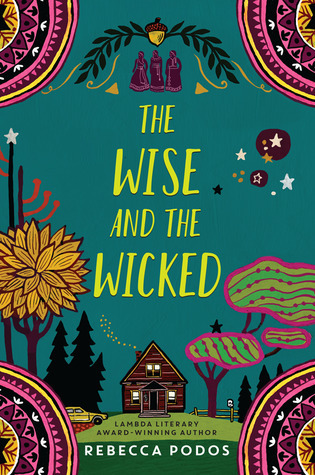
Wise and the Wicked almost reads like magical realism at first – it’s about an all-female family descended from Russian immigrants, all of whom, usually around puberty, are ‘gifted’ with a premonition of their own deaths – their Time. That’s the only magical power left to them, where once (supposedly) they had much greater and impressive gifts. Teenage Ruby is trying to have a normal life, but that starts to spiral out of control when her grandmother dies – and the family discovers that she, of all the family, managed to live past her Time. Discovering that that’s possible sets Ruby on a path that leads somewhere entirely unexpected. The writing is beautiful, and the twists and turns are fantastic – I can’t believe where this book ended up going (in the best way). But damn, I need a sequel!
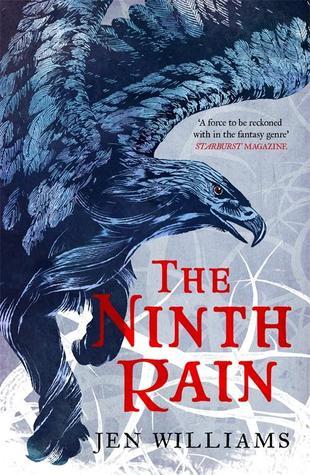
I can’t believe it’s taken me so long to get to Jen Williams! I read a chapter of her first book, Copper Promise, when it first came out, and I bounced off it, and I guess I put Williams on my list of authors not to bother with. Well, that was one of the dumbest things I’ve ever done! Thankfully, something made me pick up Ninth Rain – I think it was reading somewhere that one of the main characters is a lesbian – and I absolutely adored it. The book is set in the world of Sarn, which has been attacked eight times by monstrous alien creatures – monsters that were fought off each time by the Eborans (picture something like elves, but even more arrogant) and their magical War-Beasts. But the Eborans’ tree-god, the source of their longevity and War-Beasts, is dead, as are most of the Eborans. One of the last of the survivors, Toreth, has abandoned Ebora and is now working with Vintage, an eccentric vintner who’s devoted her life to studying the alien ruins. The two of them eventually cross paths with Noon, a young woman capable of turning life-energy into impossibly hot green flames. The three of them are swept up in the politics of priesthoods and the mysteries behind the monstrous attacks and the decline of Ebora, and just – damn, okay? The writing and worldbuilding are stunning, and although it took me a little while to warm up to a few of the characters, once I did, I fell hard. I’m seriously kicking myself for taking so long to read Williams’ work, and I’m deep into book two of this trilogy now!
Rereads

Although I love the Green Creek series as a whole, Wolfsong has a special place in my heart – not just because it’s the first book of the series, but because the narrator, Ox, has a voice like nothing else I’ve ever read. Yes, there’s werewolves and queerness and magic and mysteries and so much found-family and love, but it’s Ox’s voice that makes this one a masterpiece. It was the right decision to choose other narrators for the other books in the series, but Ox is special.
Which is not at all to say that I’m not looking forward to the conclusion of the series, Brothersong. Are you kidding?! I can hardly stand the wait – and that’s despite the fact that TJ Klune has two other releases this year, both of which rock!
(I mean, I haven’t read the Extraordinaries yet, the second of Klune’s 2020 books. But. It’s Klune. It’s gonna rock.)
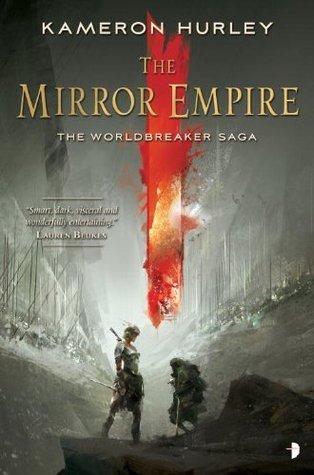
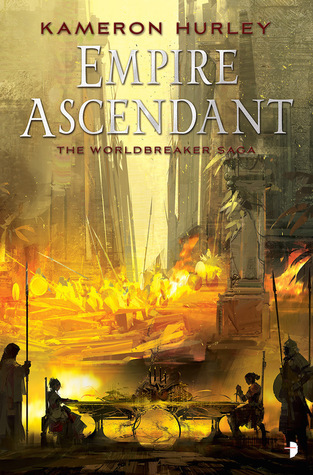
The Worldbreaker series is, I guess, not for the faint of heart – Healey doesn’t flinch away from having bad things happen to good people, and it’s hard to argue that the violence isn’t grimdark-level. (Although there is, at least, no rape, for which I’m grateful. Why is it easier to read about other forms of violence than it is rape?) But gods, if you can handle that, it’s so worth it. Healey’s worldbuilding is beyond compare, and her writing is – is ‘brutally poetic’ a thing??? Because if it’s a thing, then that’s Healey’s writing style. The cast is very diverse – several of the cultures in this series have more than two gender roles – the magic system brilliantly unique, and the stakes are impossibly high. I love it. I love it I love it I love it. I’m not sure I realised how much until I was rereading these two in preparation for the final book of the trilogy. (Which I’m in the middle of now, and, just. Wow.)
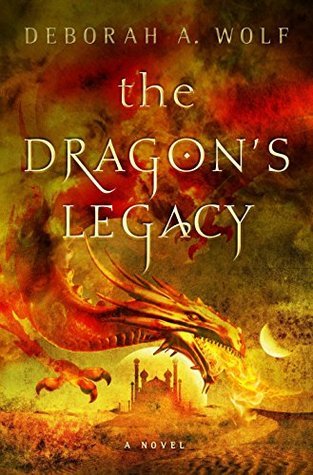
I managed to review Dragon’s Legacy this month for Wyrd & Wonder, so you can read my thoughts about this one over here. Suffice to say, this is one of those books that I tuck behind my heart and keep close and sacred.
What about you? What books have been your faves this year?
The post My Favourite Reads of 2020 (So Far!) appeared first on Every Book a Doorway.
May 29, 2020
Fantastic Beasts, Here You’ll Find Them: Dragons!

Wyrd & Wonder is about celebrating the fantastic – and aren’t dragons emblematic of Fantasy?
So how come we don’t actually see them that often? Think about it: we consider them genre staples, but they’re actually pretty scarce on the shelves. How many dragons have you seen lately?
So I thought I’d gather together some of my favourite dragon-books to help out other dragon-seekers – including a few books you almost certainly haven’t heard of!
*

The Tale of Lanen Kaelar trilogy is…well, put it this way: I’ve never met another person who’s read it. Which is a shame, because it’s a very beautiful, albeit pretty unusual, series of books.
It looks pretty conventional at first glance: Lanen has grown up tall and strong and plain, and dreaming of dragons. When her father dies, she seizes the chance to run off on the adventure she’s always longed for – journeying to the Dragon Isle, where grows the miraculous lansip trees (whose leaves and fruit heal wounds and even reverse aging) under the care of the True Dragons.
It’s been a century since anyone made it to the Isle, and no one but Lanen really believes in capital-d Dragons. But when circumstances align to bring her to those distant shores, she finds that her dreams were all wrong – in that they didn’t come close to capturing the true wonder of what she finds there.
It’s a typical Medieval-esque setting, a great big land divided into four kingdoms, but it’s surprisingly well fleshed-out. The first book, however, takes place almost entirely on the Dragon Isle, and its in the creation of her different species – and their history and interactions with each other – that Kerner really shines. The Kantri, as the dragons call themselves, have an intricate culture of their own – one detail I absolutely adored was the formal ritual poses they used to communicate all kinds of things to each other, adding emphasis, context or connotation to their speech – and good reasons for having withdrawn from humans. The trilogy as a whole follows Lanen and the king of the Kantri, Akhor, as they work together to bridge the differences between their two peoples – and save the Kantri from slow annihilation.
[image error]
Dragonsbane takes a bunch of traditional tropes, and flips them all over the place. Jenny Waywest is a witch in the poor, bitter Winterlands – and not a powerful witch, either, something she tries to be mature about, but which is a deep, private hurt. Part of the reason she’s not so powerful is that she’s the partner – not wife – of John Aversin, the bespectacled, scholarly lord of the Winterlands, the only man in living history to have slain a dragon. Having a life that’s not devoted to the study of magic – and loving a man and giving him two sons definitely means splitting her priorities – is a good part of why she’s so weak, magically.
And now she’s going to have even less time to study, because John is needed to slay another dragon.
What makes Dragonsbane special is, first off, Hambly’s incredibly beautiful prose, which is rich, lush, and lyrical. Seriously, it’s exquisite. But Dragonsbane also makes dragons beautiful, despite the fact that they’re very much seen as monsters in the Winterlands world. Hambly imbues dragons with awe and wonder, makes them something truly glorious – beings worthy of worship, even, though none of the characters happen to agree with me… And there’s so many little worldbuilding details – specifically about dragons – that just delight me; like the reason dragons hoard gold…
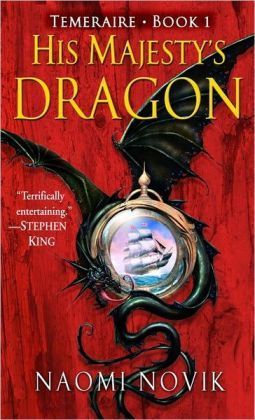
If you’re a fan of dragons, you’ve probably checked out this series already, but just in case you haven’t, allow me to introduce you! In the world of Temeraire, the Napoleonic Wars are going strong – but countries aren’t just fighting with armies and navies: they have aerial corps made up of dragons! Some of the dragon-rider tropes are present here – dragons imprint on a single person, their ‘captain’, but they’re so big that they also have entire crews who ride around on them and fight from their backs. The dragons are also sentient/sapient, with the powers of speech; they’re just as much thinking, feeling beings as the humans who crew them.
The series starts with navy captain Laurence accidentally ending up the captain of a captured dragon egg, one no one in Britain seems able to identify. Temeraire is the dragon who hatches from that egg, and he and Laurence are immediately enrolled in training to join Britain’s aerial corps. It’s the characters that make it shine – Temeraire is just delightful – and the relationships between them; the bond that grows between Laurence and Temeraire is a really beautiful, joyous thing to behold. The worldbuilding is also phenomenal, particularly as the series goes on and we get to see how different countries and cultures interact with dragons around the world – not everywhere has the same set-up as England, and some are very different indeed! Seeing how different cultures have incorporated dragons, or been influenced by them – how different peoples have found ways to live alongside them, or worship them, or make use of them… It’s just so freaking cool.
The dragons themselves are also amazing – Novik has created dozens of different species, each with their own size, colouring, mental capacity/IQ, temperament, and special abilities – which are not magical; the dragons here are purely natural, not supernatural, creatures. One of the ways in which this manifests is that most dragons can’t breathe fire; that’s an ability only held by certain dragon breeds, and jealously guarded by the humans who ‘own’ those breeds.
Novik skillfully weaves her dragons into the real historical record, as the wars fall out more or less as they did in history…but with some incredibly interesting twists. And although the series at first disguises itself as something purely fun, book by book it also tackles the place of dragons in society, their rights and roles and how humans ought to treat with them. It’s a seriously epic series that I can’t recommend any more enthusiastically!
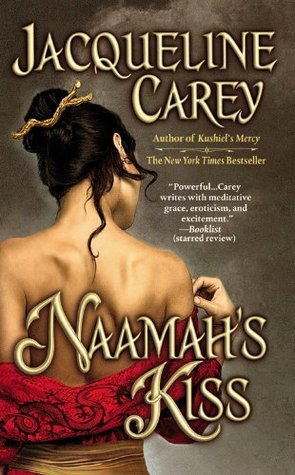
Set in the same world as Kushiel’s Dart, Naamah’s Kiss follows Moirin, a young woman descended from angels on one side of her bloodline, and from the most ancient people of Ireland on the other. The gods of both sets of her ancestors have great plans for her, and from being raised in a cave in Eire she’s called to travel – not just to Terre d’Ange, the land of the father she’s never known, but even further beyond that. In the first book of the Naamah trilogy, she accompanies her teacher and companion to her world’s China, where she has to save a princess from a dragon – although not in the way you might expect!
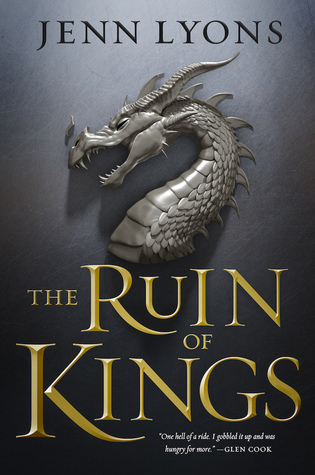
I mean, this series is called Chorus of Dragons, so it’s not that weird that they feature. One of the things that struck me when I first read Ruin of Kings is that Lyons’ dragons feel like dragons – the old classic kind; enormous, terrifying, magical, capable of speech… But Lyons’ signature is taking classic tropes and completely redoing them, not so much subverting expectations as blowing them out of the water – so the very-classical dragons have some seriously nontraditional features. I can’t tell you what they are, because major spoilers, but I urge you to pick up this series. I mean, it’s ridiculously awesome whether you’re into dragons or not, but if you are into dragons, you really have no excuse for not checking it out.
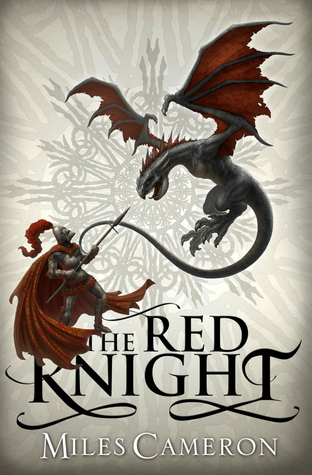
It’s wyverns, not dragons, that first appear in the Traitor Son cycle – but when the dragons do show up, hoo boy. Here, dragons are multi-dimensional beings of immense power, more than mere mortals could ever comprehend – and the feuds between them can break and end worlds. As the series goes on, it becomes clearer and clearer to the human characters that the disaster they’ve been swept up in is indeed one of these feuds, and the way that plays out is just marvelous. I really love what Cameron’s done with his dragons in this series, and if you have the patience to get through the ‘human bits’, it’s an excellent read for dragon-lovers!
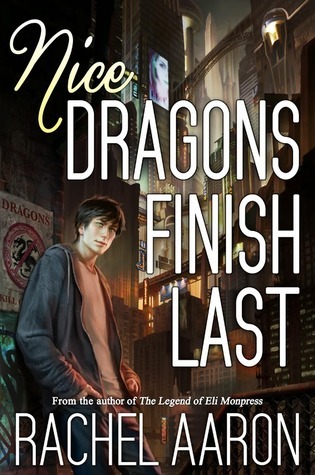
The Heartstrikers series is freaking awesome. No, seriously: Aaron has created a slightly-in-the-future world where magic has woken up again, and the dragons that have slept for millennia have woken with it. Julius is the youngest and least-loved member of clan Heartstriker – the largest dragon clan in the world. He’s least-loved because he’s a complete disgrace of a dragon – not sneaky or conniving or cruel at all, to the point that his mother binds him into his human form and kicks him out of the mountain, to prove himself or die.
Aaron could have played this for laughs, and I’m not denying that there’s plenty of laugh-out-loud moments in this series. But it’s also a deeply interesting, and deeply meaningful, series, hopepunk in the extreme, with really fabulous worldbuilding and characters. It certainly doesn’t hurt that the Heartstriker clan have feathered dragon forms, like Quetzalcoatl! (Anyone else remember the quetzalcoatl dragons from the Dragonology books?)
 Julius in his dragon form with Marci, by Gergana Hristova
Julius in his dragon form with Marci, by Gergana HristovaAs the series progresses, Julius and the allies he gathers around himself are set to redefine what it means to be a dragon – and seriously, you’ll never see it all coming. It’s sheer brilliance, and a must-read for any dragon fan!
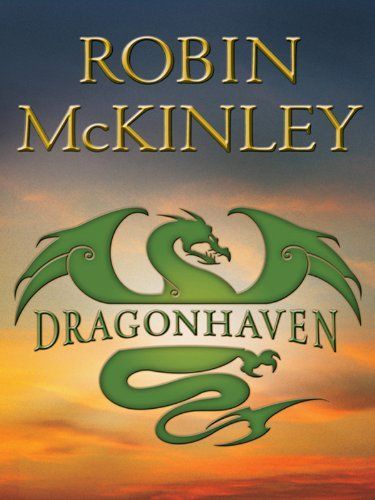
Dragonhaven revolves around Smokehill National Park – a wildlife preserve for some of the last dragons in the world – and what happens when young Jake, who’s been raised at the park, finds a dead mother dragon, a dead poacher – and a living baby dragon. McKinley has an excellent track record when it comes to her non-human species/characters, and her take on dragons is just incredible. She absolutely nails how alien and different non-human sapience would be – and how difficult, but rewarding, it would be to try and connect with it. Not everyone enjoys the sort of rambly first-person style of Dragonhaven, but if you do, or can put up with it, it’s well worth it.
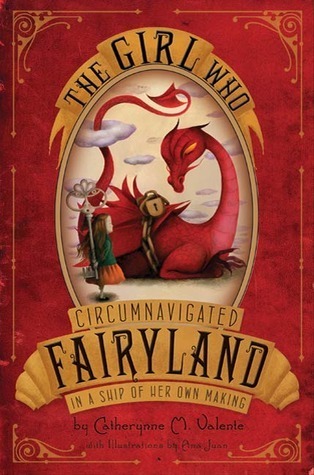
Technically, A-Through-L isn’t a dragon – he’s a wyverary; the child of a wyvern and a library. And he’s absolutely wonderful. This is one of my favourite books in all the world, and there’s no way it wasn’t making it onto this list: A-Through-L is one of the sweetest characters in all fiction, and his adventures alongside human girl September in Fairyland are not to be missed – under any circumstances!
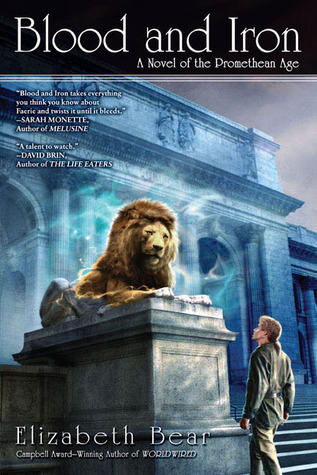
The dragon here doesn’t get much screentime, but she is pulling the strings of just about everything. In Bear’s story about the battle between humanity and faeries, she freely explores with how multi-faceted and slippery myths and stories are – and in line with that, her dragon is actually All Dragons, shifting form from moment to moment in a way that’s heartbreakingly beautiful. I love this series for its own sake, but Mist – said dragon – is really something special, and her place in the meta-myth – in the heart of the world, the heart of all magic, the heart of all legends and truths – is a genuinely amazing exploration of the dragon motif.
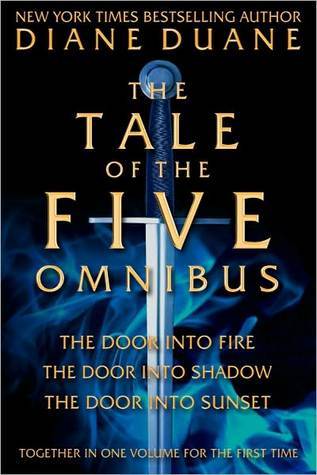
Duane’s dragons – which show up in book two of the series, Door Into Shadow – are some of the most unique I’ve ever seen. They’re also some of the most fun, as characters. The problem is, I don’t feel like I can tell you anything about them at all, because what they do and how they work are pretty major spoilers. Can you just take my word for it that if you’re looking for non-traditional takes on dragons, this is one series you really shouldn’t miss out on?
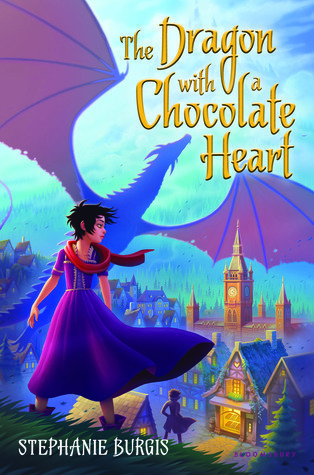
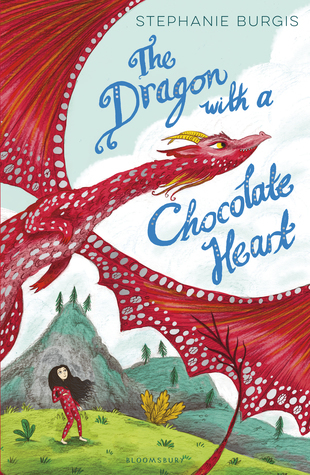
Yeah, it’s a kid’s/MG book – but you know what, Dragon With a Chocolate Heart is brilliant. (And I had to post both the US and UK covers because frankly, they’re both brilliant too). The story follows Aventurine, a young dragon who gets turned into a human when she sneaks out of her family’s mountain. Her unrepentant fierceness and disdain for human social moores is both brilliant and funny – and sometimes makes you pause and really think about why humans act the way we do. Dragon culture demands that every dragon find their Passion, and Aventurine doesn’t let being turned human stop her – in fact, being in human form is pretty helpful, since she decides her Passion is making chocolate, and that’s much easier to do with hands!
It sounds like a silly little story, but the thing is that it’s not. The best kids’ stories don’t talk down to children, and this one doesn’t – there’s plenty here for an adult to enjoy, lots of sneaky smart points and emotional twists and turns. It is incredibly fun, but I also love it for being incredibly meaningful and clever too, and if you’re into dragons (and looking for a comfort read) it’s definitely one to check out!
(There’s also some lovely sequels Aventurine features in too…)
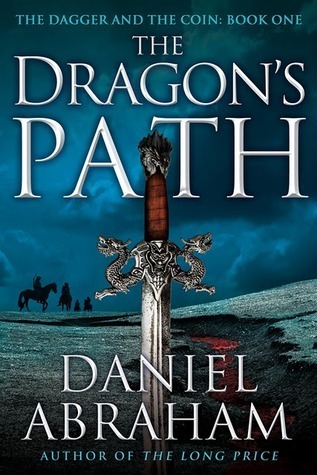
Despite the title of the opening book of The Dagger and the Coin series, there aren’t actually any dragons present. Instead, what we have is a world shaped by dragons; one where all the races of humanity are the creations of the advanced dragons who once ruled the world. By the opening of the first book humanity has long since overthrown their slave-masters – but that doesn’t mean the affairs of dragons can’t reach through the ages to still affect the descendants of their creations.
Bonus: Sea Dragons!
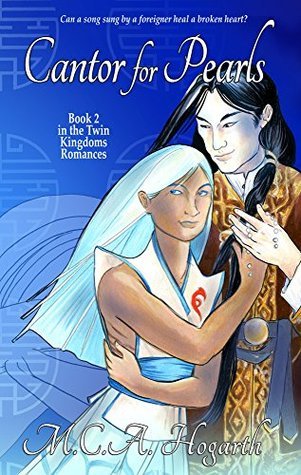
Cantor for Pearls is the second book in the Twin Kingdoms Romances, and I very much urge you to check out book one – Cantor stands alone pretty well, but the first book introduces the characters and the world. Either way, Cantor follows Always Falling – an agender, asexual individual who uses it pronouns – when Always is called back to visit its family. Its family aren’t exactly the best, but they work closely with beautiful, fully sapient sea dragons, and Always has missed the sea serpents very, very much. As they’ve missed it!
It’s a beautiful, gentle story with a non-sexual romance, and genuinely lovely sea dragons who are fabulous characters in their own right. I adore this series, and this book, and more people need to be reading it!
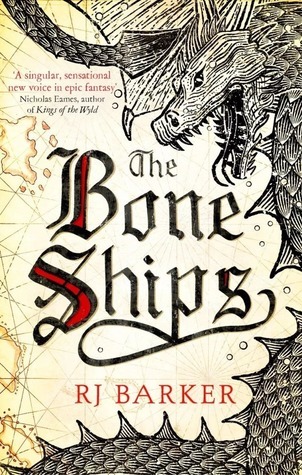
The Bone Ships is set in a world – specifically, an archipelago – whose very existence revolves around sea dragons: the ships of the archipelago’s peoples are made of sea dragon bone (hence the title), and this influences every aspect of the cultures involved. But the sea dragons have been extinct for generations – which means no new ships. Given that the sea-faring peoples are locked in an eternal war, that’s a problem.
Given that a single sea dragon has been spotted far to the north… It’s an even bigger problem.
In order to prevent an unimaginably vicious war – which is exactly what will happen, if word gets out that there’s a new potential source of dragon bone – the characters of Bone Ships are off to try and escort the sea dragon to safety. That’s a difficult, complicated task to begin with, but politics, magic, and mercenaries will all make it more difficult yet…
And that’s it! I hope you’ve found a few books to interest you – and why don’t you share your own favourite dragon-books in the comments below? I’m always looking for new reads!
The post Fantastic Beasts, Here You’ll Find Them: Dragons! appeared first on Every Book a Doorway.
May 27, 2020
Outshining the Sun: Raybearer by Jordan Ifueko


Raybearer by Jordan Ifueko
Representation: Major Asexual Character, Minor Gay Characters
on 18th August 2020
Genres: Fantasy
Buy on Amazon, The Book Depository
Goodreads

Nothing is more important than loyalty.But what if you’ve sworn to protect the one you were born to destroy?
Tarisai has always longed for the warmth of a family. She was raised in isolation by a mysterious, often absent mother known only as The Lady. The Lady sends her to the capital of the global empire of Aritsar to compete with other children to be chosen as one of the Crown Prince’s Council of 11. If she’s picked, she’ll be joined with the other Council members through the Ray, a bond deeper than blood.
That closeness is irresistible to Tarisai, who has always wanted to belong somewhere. But The Lady has other ideas, including a magical wish that Tarisai is compelled to obey: Kill the Crown Prince once she gains his trust. Tarisai won’t stand by and become someone’s pawn—but is she strong enough to choose a different path for herself?
Okay.
Okay.
You know how they tell you, don’t judge a book by its cover?
ABSOLUTELY JUDGE THIS BOOK BY ITS COVER.
I know, I know, how can that be possible??? Is not that cover an absolute masterpiece???
By which I mean, hell yes, Raybearer more than lives up to its jawdroppingly-gorgeous cover. In fact I will even go so far as to say it outshines its cover.
It is, my friends, it is.
BUT THIS STORY. THIS BOOK. YOU ARE SO UNPREPARED. So much kudos to Amulet Books, the publisher, because at least they did their best to prepare you for how good this book is going to be. I mean, they warned us. With that cover. That it would be a ridiculously amazing story waiting behind it. Pick up this book at your own risk, that cover says. Ifueko is not messing around even a little bit.
Honestly, folx, even with that warning, even having braced myself for truly divine levels of awesome, Raybearer still blew me away.
Behold what is coming indeed.
So now: what is Raybearer, and what’s it about?
The answers to both those questions are superficially simple, but actually beautifully rich and complex.
Raybearer is an African-inspired fantasy. I will not pretend to have any real familiarity with African countries, cultures, or mythologies, because I don’t, so I can’t say whether any of Ifueko’s creation draws from specific places or peoples. But the setting alone makes it stand out in a genre that’s still way too focused on fantasy-Europe, and the worldbuilding is phenomenal. Ifueko’s world feels like one you could step into and start living in, it’s that detailed and real, while feeling entirely new and fresh. The empire of Aritsar is made up of disparate nations that were stitched together by magically-created land bridges (land seams?) long ago: Mewe, Nontes, Biraslov, Blessid Valley, Nyamba, Moreyao, Oluwan, Djbanti, Swana, Dhyrma, Sparti, and Quetzala. Each one has its own culture, its own songs and stories, trade goods and fashions, customs and architecture. Each one feels real like a completely real place, even though Ifueko never resorts to any kind of info-dumping, instead letting the sense of each territory grow naturally in the reader’s mind over the course of the book.
Tucked away in Swana, raised in an invisible house with tutors who are terrified of her, is our main character, Tarisai. Tarisai’s mother is nameless, known simply as The Lady, and Tarisai rarely sees her; as a result she grows up lonely and touch-starved, desperate to please her much-absent mother. But what The Lady wants with her daughter is truly horrific; taking advantage of the magic that went into Tarisai’s conception, The Lady orders her to kill the Emperor’s son – an order Tarisai has no way to resist. But even getting close to the young prince is no simple feat…
This all makes Raybearer sound like a book that it’s not. The blurb, too, works hard to make this fit neatly into what we expect of YA fantasy, but the fact is that it doesn’t. Raybearer is like nothing I’ve ever read before, and not just because of the superb worldbuilding. This isn’t some kind of paranormal romance, and it’s nowhere near as simple as it seems. A lot of YA follows a kind of a-b-c plot structure; one where it’s pretty clear and simple, maybe even predictable. Raybearer is not like that. There’s so much going on in this book – so much that in a lesser author’s hands, the story would have felt over-full and rushed. But Ifueko more than pulls it off; she’s written a book that absolutely shines.
And wherever you think the story is going? You’re wrong. There are twists and turns here, subverted tropes and stunning revelations that you’ll never see coming. Raybearer demands an accounting of its characters and of the reader, too; it challenges you to determine what justice and fairness are, to define them and determine what they’re worth. What price would you put on truth? Which is more important, order or justice? Lawfulness or fairness? Authority or integrity? What’s a single life worth? What about when that life is someone you don’t know? What about when that life belongs to an outsider, a foreigner?
Would you overturn a system that benefits the many for the well-being of a few?
How hard would you fight for what you believe in?
Raybearer is woven of multiple plotlines, storylines; there isn’t just one goal, one easy win, one clear and simple battle to be fought. It’s about family, and what that means; it’s about misogyny and tradition, the value of history and the dangers of censorship; it’s about cultural identity versus unification. It’s about the different ways to be strong, and to be good. It’s about idealism and how hard the status quo will work to quash it; it’s about whether it’s right or wrong to let the fires of idealism go out. It’s about believing in your own worth, and demanding the world recognise it; it’s about claiming your personal power and your place. It’s about race and identity, magic and friendship; it’s about so many different kinds of love. It’s about the value of human life, whether that human is a loved one or a stranger, one of your own kind or some other.
This is a book I couldn’t put down, and didn’t want to. Seconds after I turned the final page I was online, looking up whether there was going to be a sequel (don’t worry, there will be!) I spent days excitedly rambling about Raybearer to anyone who’d listen, and I’ve spent over a week trying to put my thoughts about it down in words.
It’s hard, because all I want to do is scream READ THIS BOOK. If I turned my thoughts into type, this whole review would just be thousands of exclamation points and flailing gifs. I don’t know how to tell you how freaking incredible Raybearer is.
It just IS.
It’s not that this is a Message book – it’s not preaching at the reader. It’s not an excuse for Ifueko to lecture about her own morals, or her view of the world. Raybearer is an adventure, a brilliant fantasy, an incredible story. There are giant cats, and magical tattoos, and a beautiful creation story; there are faeries and djinn-like creatures, magical talents and found family. There’s heart-in-your-throat tension and moments that will take your breath away with the power and glory of them. You’ll want to scream, and you’ll want to sing; you’ll roar with rage and fury at the injustices, and howl approval and celebration at the fierce, hard-won triumphs. This is a book that sends shivers down your spine and makes the hairs on your arms stand up; it’s a book that gets into your heart, and stays there.
Raybearer is pure magic.
No question: this is one of the best books of the year. And come 2029, when I’m making my next Best of the Decade list? Raybearer will be on it.
Preorder it if you haven’t already. Because seriously – missing out on this one? Is simply not an option.

The post Outshining the Sun: Raybearer by Jordan Ifueko appeared first on Every Book a Doorway.
May 20, 2020
Witches, War, Worldbuilding: Motherland Fort Salem is a show not to be missed

Wyrd & Wonder isn’t just for books, and there’s one tv show that fantasy fans definitely need to hear about. So here’s my attempt to talk about this groundbreaking show and how much it means to me!
*
Tonight the finale of the first season of Motherland: Fort Salem airs on Freeform, just days after the show was renewed for a second season. Switches, as us fans call ourselves, sent up prayers of thanks to the Goddess of the show’s witches at the news, but it’s entirely possible that you haven’t heard of the show at all.
And that’s simply unacceptable, because Motherland is a show like no other, and if you haven’t watched it yet you are missing out.
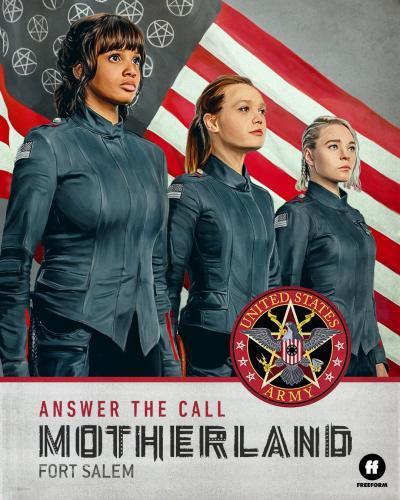
Here’s the premise: in an alternate version of our own world, witches are very real, a separate but related species of human (with some seriously cool biological differences I’ll get into later) that work real, powerful magic. But they’re not free to use it how they please: back during the Salem Witch Trials, they struck a deal with the US government, trading freedom from persecution for military service. It’s a deal that was eventually made all over the world: now in every country, witches are conscripted into their nation’s militaries once they turn 18. Stress on the word conscripted: it’s not mandatory.
Which brings us to the Spree – a terrorist organisation of draft-dodging witches who believe this worldwide, life-long military conscription is akin to slavery.
I’m not sure they’re wrong, but their methods are horrific. They don’t exactly have the moral high ground.
The show follows three new recruits as they hit basic training: Abigail Bellweather, who comes from a long line of decorated military officers; Tally Craven, an idealistic witch from a matrifocal community (an all-female commune); and Raelle Collar, whose mother died young and left her more than disillusioned with the military complex. Come Conscription Day, their medals appear before them via magic, and they each say the oath that binds them to service – and, though they don’t know it yet, to each other.
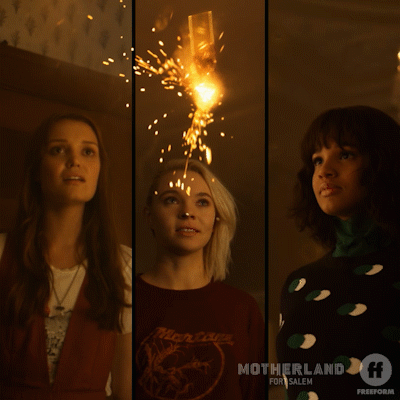
The three of them are wildly different, but have to find a way to make things work when they’re assigned as partners. Between the pressures of their training, a political climate that’s like an oil-soaked bonfire waiting for a match, and the worsening attacks of the Spree, it’s do-or-die.
So what makes this show special?
Am I allowed to say, literally everything???
This is a fierce, brilliant, feminist, wildly original show, and seriously, every little detail makes me swoon. The worldbuilding is phenomenal, incorporating ‘traditional’ witchy folklore alongside completely unique concepts – for example, every witch has a ‘mark’ somewhere on their bodies, which is a bit of historical trivia that comes from the actual Witch Trials (witchfinders claimed witches all had marks left by the Devil somewhere on their bodies). Through historical re-enactments that the recruits get to witness, we even see that the witch’s bridle was in use in this world’s Witch Trials – which is extra appropriate, because these witches make magic with their voices.
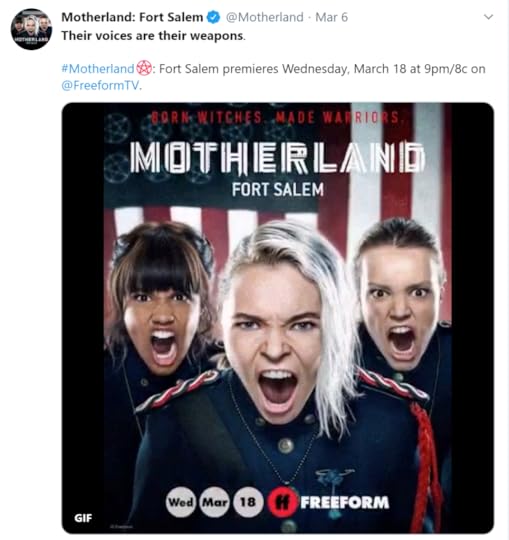
There’s no magic wands or special words here: witches have an extra set of vocal cords, allowing them to make far more sounds than other humans – and it’s these sounds that make the magic happen. Base sounds or notes are called ‘seeds’, and by mastering and combining them – many of which are beyond the audible range of humans – witches can do everything up to and including summoning up and directing hurricanes.

Before the show even aired, that grabbed my attention – that, their voices are their weapons line from the official Twitter account. We live in a world where women’s voices are often ignored where they aren’t silenced outright, so the idea of young women who can break the world open by opening their mouths? Is incredibly, gut-punchingly powerful.
When I was 11, the (all girls) school I was attending at the time arranged for us to have a self-defence class. One of the memories that’s always stuck with me is how hard our instructors had to work to teach us to scream – girls learn young that they’re supposed to be quiet and not make a fuss, to the point that many struggle to make a noise even when they need help. The sharp contrast to the world of Motherland: Fort Salem – where witches aren’t just unafraid of making noise and taking up space, but scream down storms and fire on those who dare stand against them – had tears streaming down my face as I watched. It’s so incredibly… I don’t know the right word. Validating? Freeing? Hopeful? Inspiring?
Something.
Motherland: Fort Salem takes place in an America where a Black woman is president of the United States – and there are Black women in many other positions of power, like Sergeant Anacostia Quartermaine, the trio’s drill sergeant, and of course Abigail’s mother, General Petra Bellweather. But this is also a show that puts queerness front and centre: Raelle hooks up with Scylla, another witch cadet, in the very first episode, and the relationship that develops between them is one of the linch-pins of the series. It’s not always easy to find a show that deals with sexuality well, especially queer sexuality, but Raelle and Scylla’s sex scenes are framed and shot with a refreshing respect and frankness; not gratuitous, not coy, just…natural. Motherland manages to walk that fine line between fetishizing queer sexuality and over-emphasising it, both when it comes to the actual sex and to their relationship. And their relationship is far from just sexual; like I said, what grows between them becomes a driving force of the whole story, inextricably interwoven into the politics, ethical questions, and conflicts of the show. And while those conflicts are big ones, they’re never about the queerness; no one in Motherland‘s world bats an eye at two women together.

In fact, witch society is delightfully sex-positive. Motherland showcases a world where sex is ‘celebrated, not shamed’, to quote the cast. The third episode of season one features Beltane, a festival also practised by pagans in our world that celebrates sexuality and fertility. In the show, the young witches are actively encouraged to enjoy themselves with as many partners as they please during Beltane, and embracing their sexuality and pleasure heightens their powers and strengthens their magic. I’m not sure where I, as a sex-repulsed asexual witch, would fit into the festivities, but it’s still a beautiful and joyful thing to watch, and such a breath of fresh air compared to our world, where we’re still fighting to disentangle shame and sexuality.
And like, this is all completely aside from the amazing special effects, and the plot twists, the secrets, the adventures and missions and magic. The cast, who are, all of them, incredible actresses. The politics, the Spree, the romance, the friendships, the war. We even get to see witches outside the US, as one of the major plotlines involves witch communities from other countries!
Listen. If you want magic, watch this show. If you want incredible, multi-faceted bad-ass women – depicting all different kinds of strength! – watch this show. If you want seriously wonderful worldbuilding, watch this show. If you want diversity presented as something natural and not-noteworthy, watch this show. If you want something groundbreaking, out-of-the-box, exciting, and beautiful?
Watch this show.
The post Witches, War, Worldbuilding: Motherland Fort Salem is a show not to be missed appeared first on Every Book a Doorway.
May 16, 2020
Warrior Princesses and Celestial Gods: Sera and the Royal Stars, vol 1

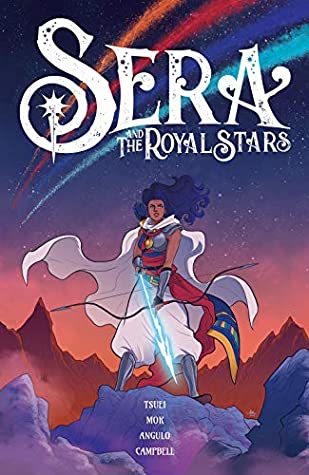
Sera & The Royal Stars Vol. 1 by Jon Tsuei, Adrian F. Wassel, Audrey Mok, Raul Angulo
Representation: Characters of Colour
Genres: Epic Fantasy
Buy on Amazon, The Book Depository
Goodreads

Civil war rages in the Empire of Parsa, and famine has struck. As the seasons refuse to turn, Princess Sera receives a vision from the deity Mitra telling her to find the Royal Stars and restore them to the heavens. Despite her kingdom and her troops' need of her command, Sera embarks on a quest to find the fallen stars—now trapped on earth—and save her people from dearth and death.
So this is my first comic/graphic novel review for Wyrd & Wonder, and – look, listen. Listen. I have only one thing to say about this book.
I LOVED IT SO MUCH!!!
I don’t read comics or graphic novels very often – I’m picky as hell – but this was an unmitigated delight from start to finish. The art is stunning, and the ‘camera angles’ of the panels are flawless, always focusing on just the right thing, zooming in on details to build tension or reveal sneaky bits of comedy, and panning out to showcase the breathtaking otherworldly realms Sera and her companions travel through.
The mythology and worldbuilding is just incredible. Drawing on Persian mythology but giving it a unique spin was enough to get me excited, because I just don’t see anyone exploring Persian mythology that often. But Tsuei has crafted a completely new mythology around the stars of the zodiac (although it did take me an embarrassingly long time to realise that’s what the royal stars are, the stars of the classical Western zodiac!), one that’s hinted at with tantalising subtlety throughout the first volume, mostly revealed through the interactions of the stars themselves – they’re all in on the backstory, of course, so bits and pieces are revealed in their conversations with each other. But not enough to give away the whole story to the reader – not yet.
It’s enough to have you turning the pages as fast as you can go.
The stars (and their enemies) aren’t the only magical beings around – I was incredibly delighted and excited when the cast briefly meets with the council of the dead, which is made up of underworld gods from multiple pantheons – I recognised Isis and Osiris, Hades and Persephone, Hel (of the Vikings), and someone that might have been Ereshkigal (Sumer). And that’s just…so freaking cool to me! Without even getting started on the peris and daevas! Or the explanation/lecture Sera receives about how gods are created – by the dreams of humans, and even those of rocks and animals…
I mean, come on. That’s just brilliant! I’m more in love with the worldbuilding than any other aspect of this series, to be honest – even though the rest of it is plenty awesome.
Sera herself is a wonderful character, a proper bad-ass who’s not that impressed at being conscripted into the affairs of divinities. I really appreciated how she felt, and acted, like a real person, with the raised eyebrows and the incredulity and the moments of ridiculousness amidst all the adventure. I loved the character designs of all the stars, too – taking a few minutes to just stare at particular panels that showcase them. So much work must have gone into making the scorpion’s human form reminiscent of an actual scorpion, without making her creepy instead of differently-beautiful (I am in love with how her long braid mimics a scorpion tail!)
I absolutely want more – I want to know what happens next, and I want to know what’s happened to the royal stars to get them into their current predicament. I want to explore more of Sera’s incredible world. When can I get my hands on volume two???

The post Warrior Princesses and Celestial Gods: Sera and the Royal Stars, vol 1 appeared first on Every Book a Doorway.

